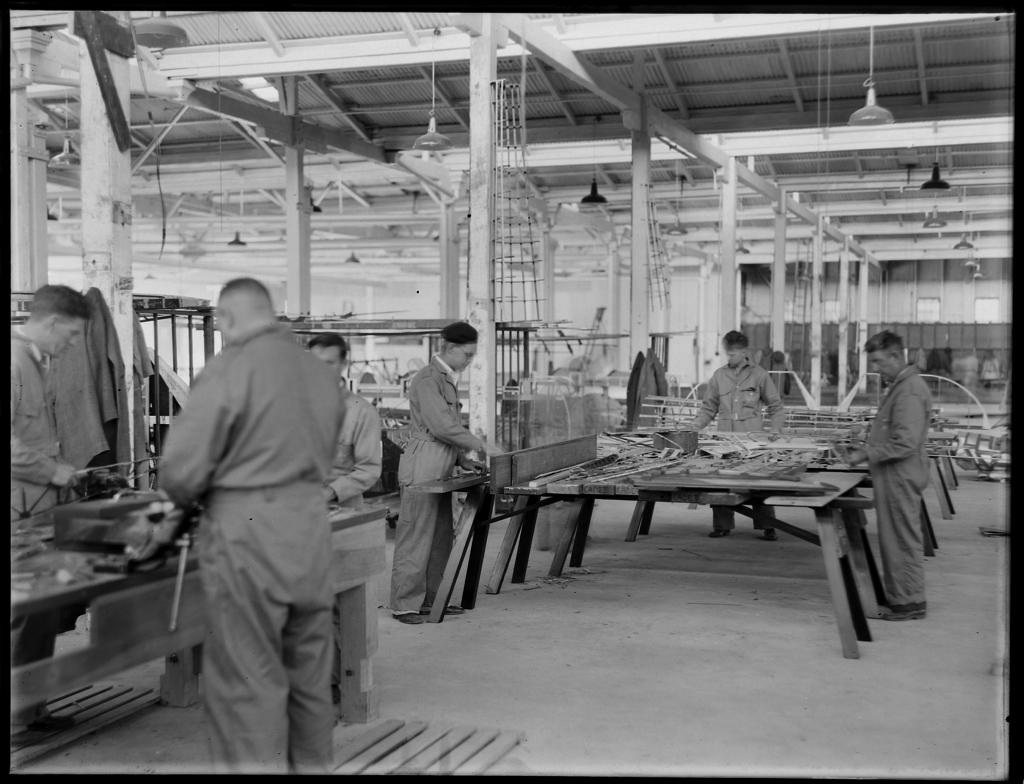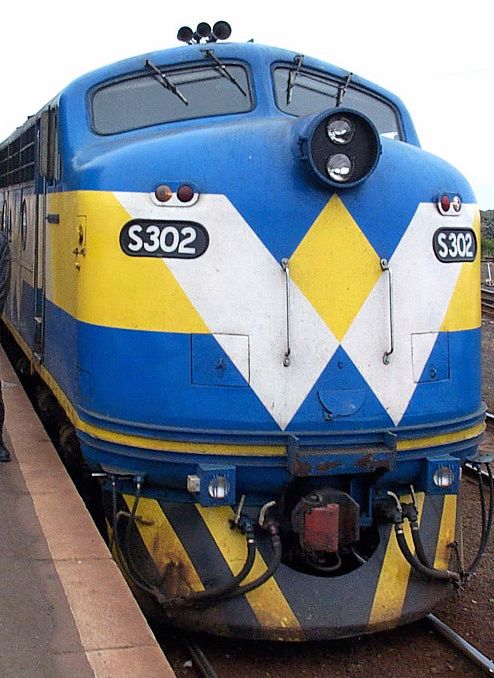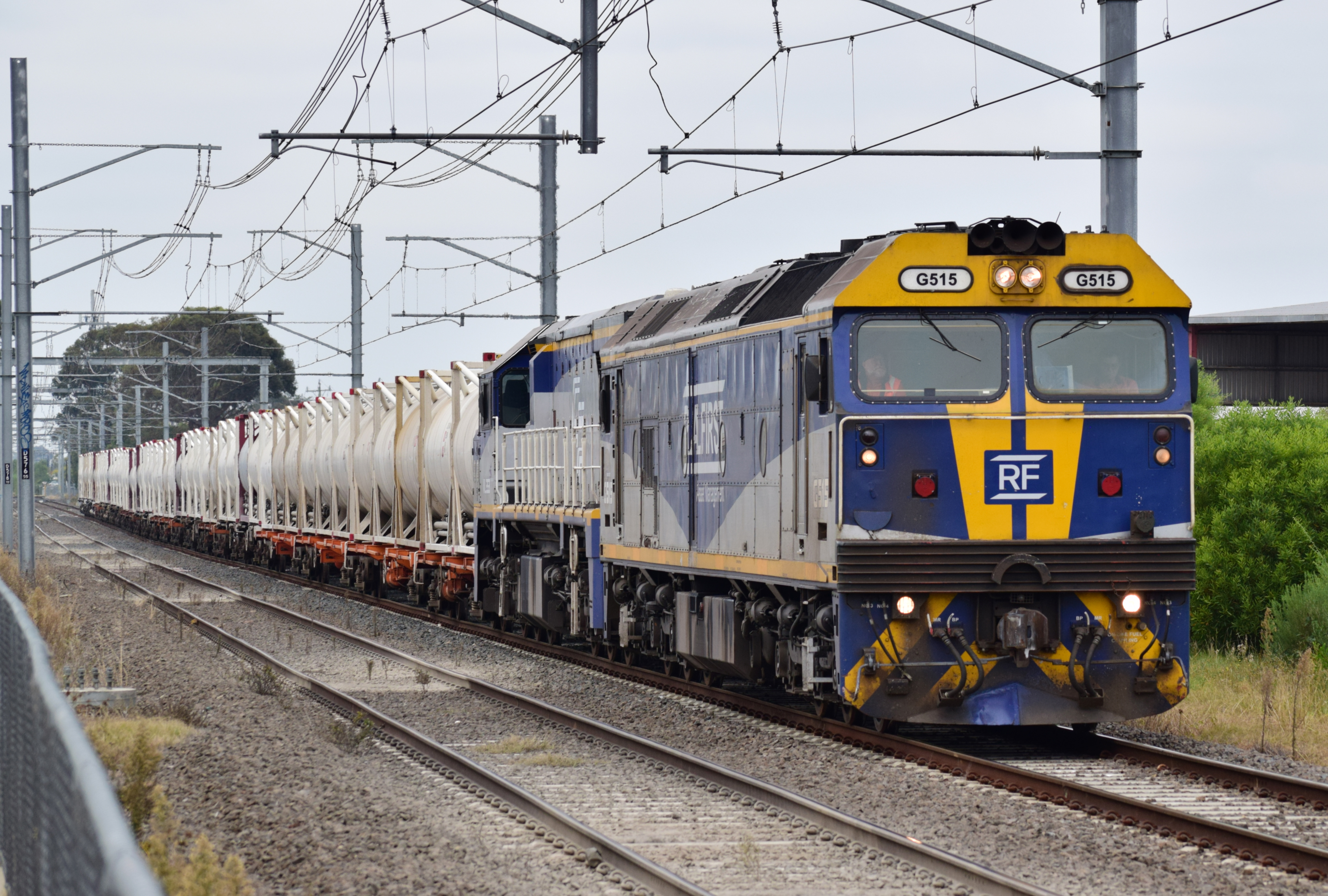|
Victorian Railways T Class
The T class are a class of diesel locomotives built by Clyde Engineering, Granville for the Victorian Railways between 1955 and 1968. History In July 1954, the Victorian Railways placed an order with Clyde Engineering for 25 (later extended to 27) diesel electric Electro-Motive Diesel G8 locomotives to partially dieselise country branch lines.1st Order (27 locos): T320-T346 & T413 (1 loco) Mark Bau's VR website In June 1959, the first of an additional ten entered service. Although mechanically similar to the first batch, they differed by having a cab raised above the hood line. Mark Bau's VR website A further ten entered service from Dece ... [...More Info...] [...Related Items...] OR: [Wikipedia] [Google] [Baidu] |
Clyde Engineering
Clyde Engineering was an Australian manufacturer of locomotives, rolling stock, and other industrial products. It was founded in September 1898 by a syndicate of Sydney businessmen buying the Granville factory of timber merchants Hudson Brothers. The company won contracts for railway rolling stock, a sewerage system, trams and agricultural machinery. In 1907 it won its first contract for steam locomotives for the New South Wales Government Railways. By 1923 it had 2,200 employees. After contracting during the depression it became a major supplier of munitions during World War II. In 1950 it was awarded the first of many contracts for diesel locomotives by the Commonwealth Railways after it was appointed the Australian licensee for Electro-Motive Diesel products. Apart from building locomotives and rolling stock, Clyde Engineering diversified into telephone and industrial electronic equipment, machine tools, domestic aluminium ware, road making and earth making equipmen ... [...More Info...] [...Related Items...] OR: [Wikipedia] [Google] [Baidu] |
Fyansford Cement Works Railway
The Fyansford Cement Works Railway was an industrial railway near Geelong, Australia, built by the Australian Portland Cement Company to carry limestone from its quarry to its cement works at Fyansford. The railway was notable for including a tunnel, the longest rail tunnel in Victoria, apart from the underground sections of the Melbourne City Loop. It had a fleet of one diesel and 11 steam locomotives, the majority of which have been preserved by heritage railway operators, in particular the Bellarine Railway. History The line was built in 1926, replacing an earlier overhead ropeway from the quarry to the main works. The railway had two main sections: one from the works depot to an older quarry, and a longer track which used the tunnel and connected to a newer quarry. The length of the main line from the new quarry to the depot was . The rail track had a gauge of , one not often used in Victoria, where the predominant rail gauge was . The cement works railway operated unt ... [...More Info...] [...Related Items...] OR: [Wikipedia] [Google] [Baidu] |
West Coast Railway (Victoria)
West Coast Railway was a passenger train company operating in Victoria, Australia that operated services between Melbourne and Warrnambool from September 1993 until August 2004. The travel time for the journey (Warrnambool – Melbourne) was around 3 hours. This is on average around 30 minutes quicker than the current journeys. History West Coast Railway was formed in 1993 when the Kennett State Government offered long-distance country rail services previously run by the government-owned operator V/Line to private operators. Bids were lodged in February 1993 and West Coast Railway was announced as the successful tender on 30 April the same year. The initial franchise was for eight years with operations commencing on 19 September 1993. Subsequently, a three-year extension was negotiated. While most other rail services tendered were replaced by road coach services, West Coast Railway successfully tendered to retain a rail service. During the 11 years of WCR operation of the line ... [...More Info...] [...Related Items...] OR: [Wikipedia] [Google] [Baidu] |
Great Northern Rail Services
Great Northern Rail Services was a railway operator in Victoria, Australia. Great Northern Rail Services was incorporated in July 1993 and provided locomotives and train crews to other rail operators, ran general train operations (freight and passenger) and rail vehicle maintenance services in Victoria. The company was the first fully accredited and operational private rail operator in Victoria.Australian Productivity Commission: Inquiry into Progress in Rail Reform - Submission by Great Northern Rail Services Pty Ltd October 1998 Australian Productivity Commission The company ceased operations in November 2002 due to the increased public liability insurance costs. [...More Info...] [...Related Items...] OR: [Wikipedia] [Google] [Baidu] |
El Zorro (railway)
El Zorro was an Australian railway operator hauling freight and infrastructure trains in Victoria, Australia, Victoria and New South Wales. History El Zorro was founded in 1999 by Ray Evans who had a taste for things Spanish, Zorro, El Zorro being Spanish for ''the fox''. At the time of liquidation, the company had two shareholders: director Ray Evans, and ex-director Lisa Trezise. Geoff Tighe, a co-founder and past shareholder and director, was formerly chief executive of Great Northern Rail Services, a now defunct operator which provided locomotives and crews to other operators in Victoria until November 2002.The Fox Gets on Track Business Review Australia In 2004, the company won a contract from Aurizon, QR National subsidiary Interail, to provide crews for its Brisbane to Melbourne rail service ... [...More Info...] [...Related Items...] OR: [Wikipedia] [Google] [Baidu] |
Eyre Peninsula Railway
The Eyre Peninsula Railway is a gauge railway on the Eyre Peninsula of South Australia. Radiating out from the ports at Port Lincoln and Thevenard, it is isolated from the rest of the South Australian railway network. Peaking at 777 kilometres in 1950, today only one 60 kilometre section remains open. It is operated by Aurizon. History The Eyre Peninsula Railway was built and operated by the South Australian Railways (SAR). As with many other early narrow-gauge railways in South Australia, the Eyre Peninsula lines started out as isolated lines connecting small ports to the inland, opening up the country for settlement and economic life including export of grain and other produce in an environment with few roads and only horse-drawn road vehicles. The railway has always been isolated from the main network. A proposal to link it with the rest of the network at Port Augusta was rejected in the 1920s and again in the 1950s. The first 67 kilometres from Port Lincoln to Cummin ... [...More Info...] [...Related Items...] OR: [Wikipedia] [Google] [Baidu] |
Genesee & Wyoming Australia
One Rail Australia is an Australian rail freight operator company. Founded by Genesee & Wyoming Inc. in 1997 as Australian Southern Railroad, and later renamed Genesee & Wyoming Australia, it was renamed One Rail Australia in February 2020 after the company sold its remaining shareholding. In July 2022 it was purchased by Aurizon and the majority of One Rail's assets were transferred to that company; some remaining assets are set to be divested. Corporate history Genesee & Wyoming Inc. was one of several US regional railroad companies to take advantage of the privatisation of Australian rail freight operations in the 1990s. In 1997, its Australian company, Genesee & Wyoming Australia Pty Ltd, acquired the South Australian rail freight assets of Australian National from the Australian federal government, which included a 50-year lease on the South Australian network from the state government. Operations commenced in November 1997 under the "Australian Southern Railroa ... [...More Info...] [...Related Items...] OR: [Wikipedia] [Google] [Baidu] |
Adelaide
Adelaide ( ) is the capital city of South Australia, the state's largest city and the fifth-most populous city in Australia. "Adelaide" may refer to either Greater Adelaide (including the Adelaide Hills) or the Adelaide city centre. The demonym ''Adelaidean'' is used to denote the city and the residents of Adelaide. The Traditional Owners of the Adelaide region are the Kaurna people. The area of the city centre and surrounding parklands is called ' in the Kaurna language. Adelaide is situated on the Adelaide Plains north of the Fleurieu Peninsula, between the Gulf St Vincent in the west and the Mount Lofty Ranges in the east. Its metropolitan area extends from the coast to the foothills of the Mount Lofty Ranges, and stretches from Gawler in the north to Sellicks Beach in the south. Named in honour of Queen Adelaide, the city was founded in 1836 as the planned capital for the only freely-settled British province in Australia. Colonel William Light, one of Adelaide's foun ... [...More Info...] [...Related Items...] OR: [Wikipedia] [Google] [Baidu] |
Australian National Railways Commission
The Australian National Railways Commission was an agency of the Government of Australia that was a railway operator between 1975 and 1998. It traded as Australian National Railways (ANR) in its early years, before being rebranded as Australian National. AN was widely used from 1980, the logo, logotype being registered as a trade mark. History Australian National Railways was established by the Whitlam Government, Whitlam Federal Government following a commitment made in the 1972 Australian federal election, 1972 election to invite the states to hand over their railway systems to the federal government. On 1 July 1975, Australian National Railways was formed taking over the operations of the federal government owned Commonwealth Railways. The state governments of Government of South Australia, South Australia and Government of Tasmania, Tasmania whose railway systems were deeply in debt, accepted. During the next two years, discussions between these two states and the federa ... [...More Info...] [...Related Items...] OR: [Wikipedia] [Google] [Baidu] |
V/Line G Class
The G Class are a class of diesel locomotive built by Clyde Engineering, Rosewater and Somerton for V/Line between 1984 and 1989. History By the early 1980s, the first generation diesels purchased by the Victorian Railways were nearly 30 years old, with an average fleet age of 20 years. In addition, 70% of the fleet was of 1,000 horsepower or less, a consequence of the historically large number of branch lines in the state. Rationalisation of the rail freight task had also been carried out, with small freight consignments being consolidated to 'freight centres' from 1976. Moves had also been made towards the operation of block trains carrying a single commodity, rather than trains carrying a wider variety of freight. Grain became the major commodity carried by rail in Victoria, with the consulting arm of Canadian National commissioned by VicRail in 1983 to find ways of improving efficiency. Recommendations carried out included increasing train sizes to 50 bogie wagons and ... [...More Info...] [...Related Items...] OR: [Wikipedia] [Google] [Baidu] |
Head End Power
In rail transport, head-end power (HEP), also known as electric train supply (ETS), is the electrical power distribution system on a passenger train. The power source, usually a locomotive (or a generator car) at the front or 'head' of a train, provides the electricity used for heating, lighting, electrical and other 'hotel' needs. The maritime equivalent is hotel electric power. A successful attempt by the London, Brighton and South Coast Railway in October 1881 to light the passenger cars on the London to Brighton route heralded the beginning of using electricity to light trains in the world. History Oil lamps were introduced in 1842 to light trains. Economics drove the Lancashire and Yorkshire Railway to replace oil with coal gas lighting in 1870, but a gas cylinder explosion on the train led them to abandon the experiment. Oil-gas lighting was introduced in late 1870. Electrical lighting was introduced in October 1881 by using twelve Swan carbon filament incandescent lamps c ... [...More Info...] [...Related Items...] OR: [Wikipedia] [Google] [Baidu] |
Somerton, Victoria
Somerton is a suburb in Melbourne, Victoria, Australia, north of Melbourne's Central Business District, located within the City of Hume local government area. Somerton recorded a population of 6 at the 2021 census. Somerton is predominantly an industrial and business suburb, and has a number of industrial parks, including the Austrak Business Park, Somerton Logistics Centre and the Northgate Distribution Centre. It is bounded by Patullos Lane in the north, the Merri Creek in the east, Somerton Road/Cooper Street in the south and the Craigieburn/ North East railway lines in the west. History The origin of Somerton's name is unclear, however records from 1847 show a "Summerton Inn". It may have also been named after Somers Town in London, England. Somerton Post Office first opened on 1 January 1854 and closed in 1864. It reopened in 1892, some time after the railway line opened and again closed in 1966. In 1994, the Somerton Business and Delivery Centre opened. Transport B ... [...More Info...] [...Related Items...] OR: [Wikipedia] [Google] [Baidu] |










